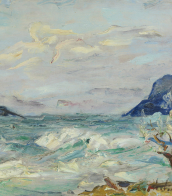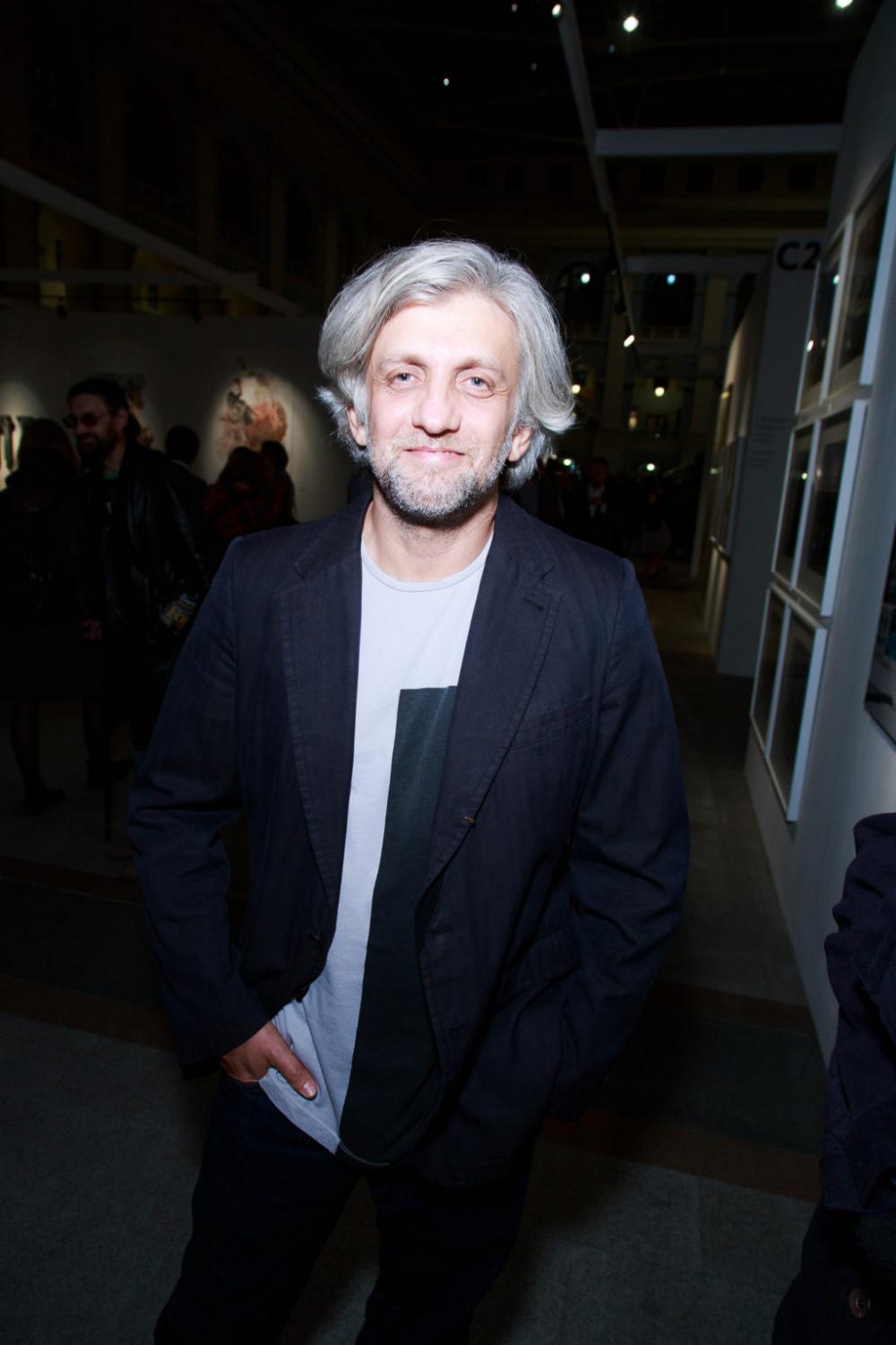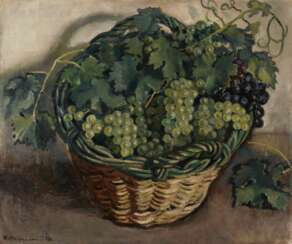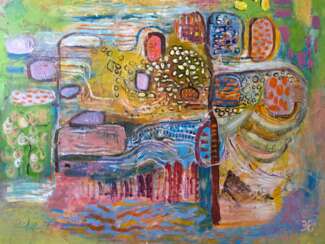evgeny p

Yevgeny Alexandrovich Lanceray (Russian: Евгений Александрович Лансере) was a Russian sculptor born in 1848, renowned for his detailed bronze sculptures that often depicted historical and ethnographic themes. His works, celebrated for capturing the essence of 19th-century Russian life, include statues such as "Young Ossetian Sitting" and "Royal Falconer" which demonstrate his skill in portraying both human figures and animals with remarkable realism and emotion.
Lanceray's artistic journey began in St. Petersburg, where he was deeply influenced by his surroundings and the vibrant artistic community. He trained under the tutelage of prominent artists and developed a unique style that made substantial contributions to Russian art. His sculptures were widely appreciated for their dynamic representation of subjects and meticulous attention to detail.
Lanceray's legacy extends beyond his sculptures, as his works are featured in major galleries and are highly sought after by collectors. His dedication to art and his ability to portray Russian culture have left an indelible mark on the art world, making his pieces revered collectibles in auctions and exhibitions globally.
For collectors and experts interested in Lanceray's work, staying informed about upcoming auctions and exhibitions can be highly rewarding. To receive updates and exclusive information on Yevgeny Alexandrovich Lanceray, sign up for our newsletter, ensuring you never miss out on the opportunity to add a piece of this master sculptor’s legacy to your collection.












Yevgeny Yevgenyevich Lanceray (Russian: Евгений Евгеньевич Лансере), a Russian artist renowned for his graphic art, painting, sculpture, mosaic work, and illustrations, has left an indelible mark on the art world. Born in 1875 in Pavlovsk, Russia, Lanceray's art journey began early under the tutelage of prominent artists at the Drawing School of the Imperial Society for the Encouragement of the Arts in St. Petersburg. His educational odyssey continued in Paris at the Académie Colarossi and Académie Julian, places where he honed his artistic skills between 1896 and 1899.
Lanceray's association with the Mir iskusstva, an influential Russian art movement, saw him immerse in the Rococo's "sparkling dust," often drawing inspiration from 18th-century Russian history and art. Despite the societal upheaval following the 1917 Revolution, Lanceray remained in Russia, diverging from many contemporaries who chose to leave. His work during this period reflects a profound infatuation with Oriental themes, inspired by his time in Dagestan and travels to Japan and Turkey.
Perhaps one of his most significant contributions is the murals at the Moscow Kazansky railway station, where Lanceray's penchant for monumental painting and the integration of tempera paint showcased his mastery. Despite facing challenges with the Soviet regime and its constraints on artistic expression, Lanceray's legacy as a muralist, illustrator, and theater designer is undisputed. His recognition came in the form of the Stalin Prize and the title of People's Artist of the RSFSR, honors that underscored his contributions to Russian and Soviet art.
For collectors and experts in art and antiques, Lanceray's work represents a unique fusion of historical inspiration and personal expression, embodying the transitionary period of Russian art from pre-revolutionary aesthetics to Soviet realism. His murals, illustrations, and theatrical designs not only reflect his artistic versatility but also offer a window into the cultural and political shifts of his time.
To stay updated on sales and auction events related to Yevgeny Yevgenyevich Lanceray, sign up for our updates. This subscription will keep you informed about the latest discoveries and opportunities to own a piece of Russian art history.


Yevgeny Yevgenyevich Lanceray (Russian: Евгений Евгеньевич Лансере), a Russian artist renowned for his graphic art, painting, sculpture, mosaic work, and illustrations, has left an indelible mark on the art world. Born in 1875 in Pavlovsk, Russia, Lanceray's art journey began early under the tutelage of prominent artists at the Drawing School of the Imperial Society for the Encouragement of the Arts in St. Petersburg. His educational odyssey continued in Paris at the Académie Colarossi and Académie Julian, places where he honed his artistic skills between 1896 and 1899.
Lanceray's association with the Mir iskusstva, an influential Russian art movement, saw him immerse in the Rococo's "sparkling dust," often drawing inspiration from 18th-century Russian history and art. Despite the societal upheaval following the 1917 Revolution, Lanceray remained in Russia, diverging from many contemporaries who chose to leave. His work during this period reflects a profound infatuation with Oriental themes, inspired by his time in Dagestan and travels to Japan and Turkey.
Perhaps one of his most significant contributions is the murals at the Moscow Kazansky railway station, where Lanceray's penchant for monumental painting and the integration of tempera paint showcased his mastery. Despite facing challenges with the Soviet regime and its constraints on artistic expression, Lanceray's legacy as a muralist, illustrator, and theater designer is undisputed. His recognition came in the form of the Stalin Prize and the title of People's Artist of the RSFSR, honors that underscored his contributions to Russian and Soviet art.
For collectors and experts in art and antiques, Lanceray's work represents a unique fusion of historical inspiration and personal expression, embodying the transitionary period of Russian art from pre-revolutionary aesthetics to Soviet realism. His murals, illustrations, and theatrical designs not only reflect his artistic versatility but also offer a window into the cultural and political shifts of his time.
To stay updated on sales and auction events related to Yevgeny Yevgenyevich Lanceray, sign up for our updates. This subscription will keep you informed about the latest discoveries and opportunities to own a piece of Russian art history.


Yevgeny Alexandrovich Lanceray (Russian: Евгений Александрович Лансере) was a Russian sculptor born in 1848, renowned for his detailed bronze sculptures that often depicted historical and ethnographic themes. His works, celebrated for capturing the essence of 19th-century Russian life, include statues such as "Young Ossetian Sitting" and "Royal Falconer" which demonstrate his skill in portraying both human figures and animals with remarkable realism and emotion.
Lanceray's artistic journey began in St. Petersburg, where he was deeply influenced by his surroundings and the vibrant artistic community. He trained under the tutelage of prominent artists and developed a unique style that made substantial contributions to Russian art. His sculptures were widely appreciated for their dynamic representation of subjects and meticulous attention to detail.
Lanceray's legacy extends beyond his sculptures, as his works are featured in major galleries and are highly sought after by collectors. His dedication to art and his ability to portray Russian culture have left an indelible mark on the art world, making his pieces revered collectibles in auctions and exhibitions globally.
For collectors and experts interested in Lanceray's work, staying informed about upcoming auctions and exhibitions can be highly rewarding. To receive updates and exclusive information on Yevgeny Alexandrovich Lanceray, sign up for our newsletter, ensuring you never miss out on the opportunity to add a piece of this master sculptor’s legacy to your collection.
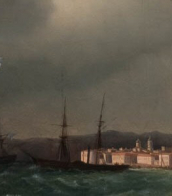

Zinaida Yevgenyevna Serebriakova (Russian: Зинаида Евгеньевна Серебрякова) was a Russian painter known for her lifelike portraits and depictions of rural life, which resonate with warmth and a profound sense of humanity. Born into the distinguished Benois family in 1884, her early life was immersed in art, guided by notable figures like her grandfather, Alexandre Benois, and influenced by her study trips to Italy and under the mentorship of Ilya Repin and Osip Braz. Her marriage to Boris Serebriakov further enriched her artistic environment, enabling her to produce works that captured the simple joys and the intrinsic beauty of her surroundings.
Serebriakova's art gained significant attention with her self-portrait "At the Dressing-Table" (1909) and continued with notable works like "Peasants" (1914–1915) and "Bleaching Cloth" (1917), highlighting her exceptional skill in portraying the Russian countryside and its inhabitants with a blend of grandeur and intimacy. Her ability to imbue her canvases with the spirit of her subjects, whether through the dignified depictions of peasant life or the intimate portrayals of her family, set her apart in the Russian art scene of the early 20th century.
The October Revolution of 1917 marked a turning point in Serebriakova's life, leading to personal tragedies and a shift in her artistic medium due to financial constraints. Despite these challenges, her resilience and dedication to art remained steadfast, evident in her works from this period that include poignant family portraits and explorations of new subjects in the realm of theatre and ballet.
In 1924, Serebriakova moved to Paris, where her art evolved through influences from travels, notably her trips to Morocco, capturing the vibrancy of landscapes and local cultures. Yet, the essence of her work—characterized by a celebration of beauty and life—remained consistent throughout her career. Although separated from her homeland for many years, the recognition of her art in the Soviet Union before her death in 1967 affirmed her lasting impact on Russian and French art.
Zinaida Serebriakova's legacy is a testament to her indomitable spirit and artistic prowess, making her one of the most cherished painters of her time. Her works continue to be celebrated for their technical brilliance, emotional depth, and the unique perspective she offered on the beauty of everyday life.
For collectors and experts in art and antiques, Serebriakova's works offer a window into the soul of early 20th-century Russia and France, embodying the universal themes of family, work, and the natural world with unparalleled sensitivity and grace. To stay updated on sales and auction events featuring Zinaida Yevgenyevna Serebriakova's works, signing up for updates is a step toward owning a piece of this exceptional artistic legacy.
